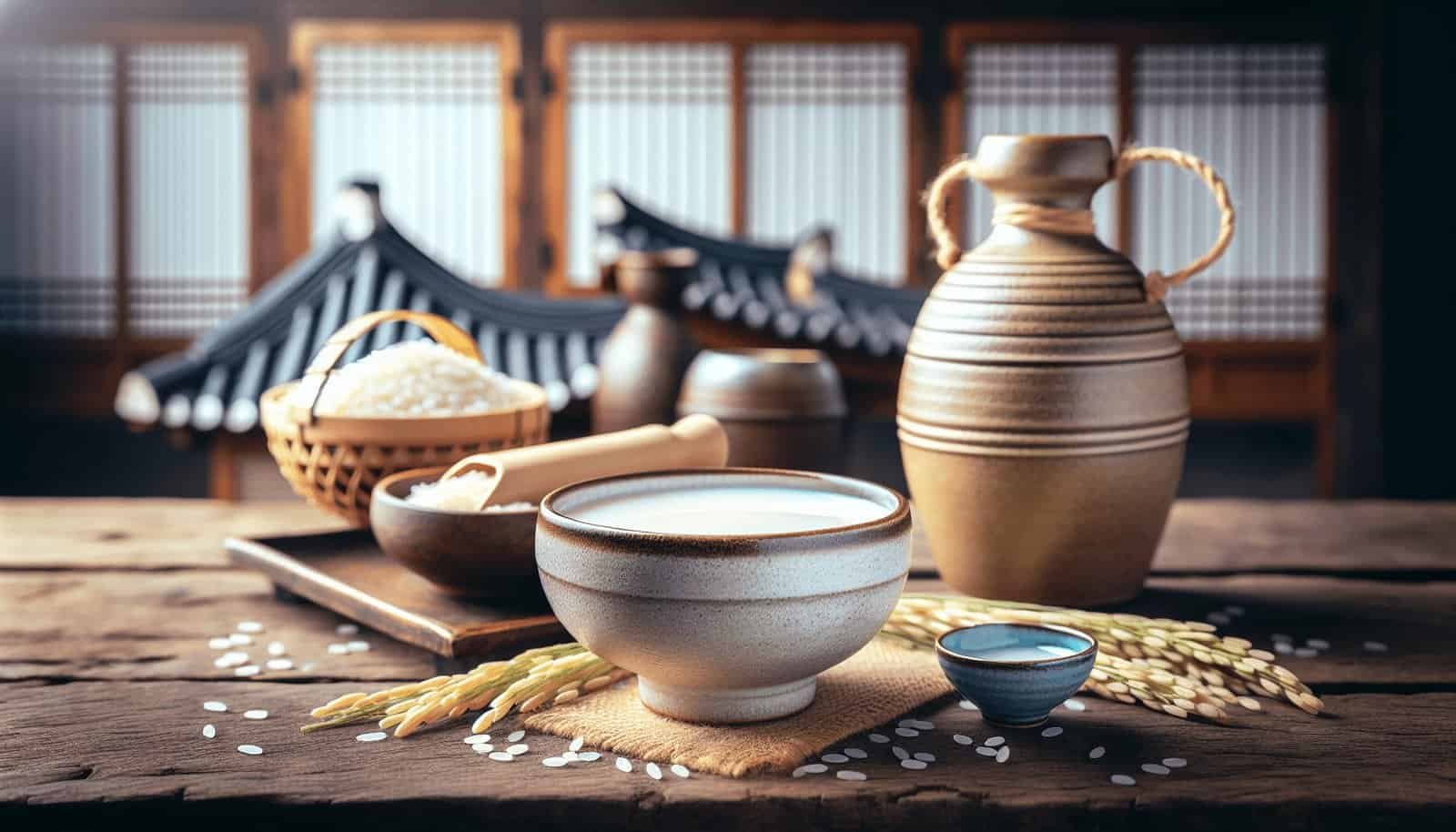Have you ever wondered what it takes to make and truly appreciate traditional Korean rice wine, known as makgeolli? If you’re curious about this unique beverage, you’re definitely in for a treat. Makgeolli, with its milky appearance and slightly tangy flavor, is one of Korea’s oldest alcoholic drinks, dating back over a thousand years. It’s more than just a drink—it’s a piece of Korean history that you can sip, savor, and even make yourself.

What is Makgeolli?
Brief History
Makgeolli is a traditional Korean alcoholic beverage with deep roots in Korean culture, tracing back to the Three Kingdoms of Korea. Originally a farmer’s drink, it has surged in popularity in recent years, making a resurgence in both Korea and internationally.
Characteristics of Makgeolli
Makgeolli’s cloudy appearance, lightly effervescent texture, and sweet, tangy flavor distinguish it from other alcoholic beverages. It’s made from rice and Nuruk (a fermentation starter), which results in its signature creamy look. The sweet taste often has hints of fruit and goes wonderfully with Korean cuisine.
Ingredients Needed for Makgeolli
Basic Ingredients
| Ingredient | Quantity |
|---|---|
| Sweet Rice or Glutinous Rice | 4 cups |
| Water | 8 cups |
| Nuruk (fermentation starter) | 2 cups |
| Brewer’s Yeast | 1 teaspoon |
The ingredients list is pretty straightforward, but the process requires patience, practice, and a bit of know-how.
Step-by-Step Guide: How to Make Makgeolli
Step 1: Soaking the Rice
Begin by soaking 4 cups of sweet rice in cold water for approximately 6-8 hours. This helps in softening the rice and making it easier to steam.
Step 2: Steaming the Rice
After soaking, drain the rice thoroughly and steam it until it’s cooked through but not mushy. This generally takes about 40 minutes. Once done, spread the steamed rice over a large tray to cool.
Step 3: Mixing Rice and Nuruk
In a large mixing bowl, combine the cooled rice with 2 cups of crushed Nuruk. Ensure that the Nuruk is well integrated with the rice.
Step 4: Adding Water and Yeast
Add 8 cups of water to the rice-Nuruk mixture, making sure all ingredients are well combined. Then, stir in 1 teaspoon of brewer’s yeast. This will initiate the fermentation process.
Step 5: Fermentation
Pour the mixture into a sterilized, large container. Cover it loosely to allow gases to escape and let it sit in a warm, dark place. The fermentation process can take anywhere from 7 to 14 days. During this time, give the mixture a gentle stir daily.
Step 6: Filtering the Makgeolli
Once fermentation is complete, strain the mixture through a fine sieve or cheesecloth into a clean container to separate the liquid from the solid rice particles.
Step 7: Bottling and Storing
Decant the strained liquid into sterilized bottles. Ideally, let it sit for another two to three days to allow the flavors to mature. Once ready, store the bottles in the refrigerator.
How to Serve Makgeolli
Makgeolli is traditionally served in a bowl rather than a glass. Here’s how you can serve it for the best experience:
Pouring Makgeolli
Before pouring, give the bottle a gentle shake. This helps in mixing the sediment, which tends to settle at the bottom.
Temperature
Makgeolli is best enjoyed chilled. Serving it cold brings out its refreshing tanginess and effervescence.
Accompaniments
Makgeolli pairs exceptionally well with Korean dishes such as pajeon (savory pancakes), kimchi, and grilled meats. Its slightly sweet and tangy flavor balances the spiciness and richness of traditional Korean food.
Appreciating the Taste and Culture
Flavor Profile
When drinking makgeolli, you’ll notice its complex flavor profile—a bit sweet, slightly tangy, and mildly effervescent. It’s got a creamy texture and sometimes a yeasty or nutty undertone depending on its age and ingredients used.
Historical Context
Understanding the rich history of makgeolli adds to the appreciation. It’s considered a “farmer’s wine” and has been a significant part of Korean festivities and rituals. Its comeback in experimental forms today bridges the past with the present, making it an exciting drink to savor.
Health Benefits of Makgeolli
Nutritional Content
Makgeolli has gained attention not only for its unique taste but also for its potential health benefits. It’s rich in lactobacilli, which are beneficial for gut health. It also contains amino acids, vitamins B1, B2, and C.
Moderation is Key
Like any alcoholic beverage, moderation is essential. Balanced consumption of makgeolli can offer health benefits without the negatives associated with overindulgence.
Popular Variations
Fruity Makgeolli
Modern iterations of makgeolli include versions with added fruits like strawberry, blueberry, and pineapple. These variations bring a different flavor dimension while retaining the traditional qualities of makgeolli.
Flavored and Infused Makgeolli
Some producers also experiment with flavors such as ginseng, chestnut, and even green tea, offering unique twists to the traditional version.
Where to Buy Makgeolli
Local Korean Markets
If you’re keen to try makgeolli without making it yourself, local Korean markets often carry a variety of brands and flavors.
Online Retailers
Numerous online retailers offer makgeolli. This can be a convenient option, especially for those not living near a Korean market.
Makgeolli in Modern Culture
Contemporary Popularity
In recent years, makgeolli has seen a resurgence among younger generations and international audiences. Its unique taste and cultural significance make it an intriguing option for those interested in global culinary traditions.
Makgeolli Bars and Restaurants
Dedicated makgeolli bars and restaurants are popping up, especially in larger cities. These establishments often serve various types of makgeolli, offering a comprehensive tasting experience.
Final Thoughts
Making and appreciating traditional Korean rice wine, or makgeolli, is a rewarding experience that opens a window into Korean culture and history. Whether you’re interested in making your own or prefer tasting different variations from various producers, there’s a lot to explore within the world of makgeolli. By understanding its ingredients, preparation methods, and place within Korean culture, you can fully appreciate this unique and flavorful beverage.
